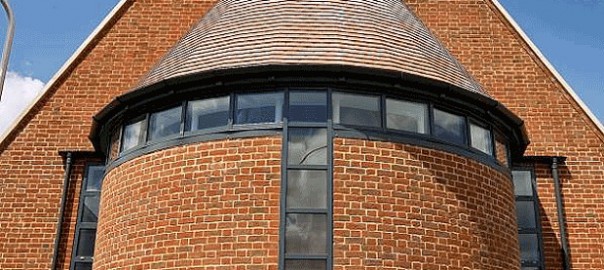Kitchens and lavatories inside churches are popular but remain controversial

A steady stream of visitors heads towards one corner of my local church. It is not a much-loved shrine or the tomb of a famous historical hero. It is the door to the lavatories.
Luckily the little block is outside in the fresh air. Heaven knows how much they cost to maintain. But there is no doubting their popularity.
The National Churches Trust is running a poll on the subject on its website. So far, voting is 64 per cent agreeing that lavatories are “essential for congregations and enable churches to become community hubs”, while 36 per cent think “it depends on the individual church building and whether there is space to install toilets”. No one has voted for the third option, that lavatories “are not appropriate for a church and should be provided elsewhere”.
Since the numbers behind these percentages are tiny (a total of 33 people), they may not signify much. But lavatories loom large in the Trust’s President’s Architectural Awards, the winner of which is announced on Thursday. Eleven contenders have been unveiled, each being a new church building or a large alteration.
It makes no difference what I think, but I can’t help feeling that kitchens and lavatories incorporated into the interiors of churches are worse than sore thumbs. Kitchen units and a sink in the nave seems like eating your dinner in the bathroom at home – not evil but contrary to the strong if unspoken proprieties of life. No one goes to the office in their pyjamas or holds a cocktail party in a launderette.
So I shuddered when I saw the neatly designed folding doors of green panelling that slide back to reveal the kitchen surface, sink and oven in the rear part of the nave of St James and St Basil, Fenham, in Newcastle upon Tyne. The tall, stone building “of considerable imagination” according to Pevsner’s Buildings of England was finished in 1931 to the design of Eric Edward Lofting and is listed Grade II.
The lovely church of St Mary the Virgin in Frampton-on-Severn, Gloucestershire, is celebrating the 700th anniversary of its consecration this year. Visitors come to see the village and the church, which is open every day. That is the reason it was decided to install lavatories. These, I think, look good, from the outside, in a little lean-to extension with a pitched roof of slate, (though the nave is roofed with lichened stone tiles).
 Kitchen corner, St Mary the Virgin, Frampton-on-Severn Photo: National Churches Trust
Kitchen corner, St Mary the Virgin, Frampton-on-Severn Photo: National Churches Trust
What, though, are we to make of the “kitchen corner” inside? With its pastel green doors and lab-tap sink, it would be a dream kitchen in any house. In a church, beneath the stained-glass windows and wall memorials, it is a bit of a nightmare. Of course, it makes possible flower festivals, school visits and concerts. But remember it is a church – and a beautiful one too – not a coffee shop.
Two of the shortlist are new churches, or, in the case of St Nicholas, Radford Semele, Warwickshire, a burnt-down church rebuilt. Here, arrangements are turned sideways, with a little altar between two windows in the north wall, beneath a glazed gable. It is wonderful that it has been rebuilt at all, just as it is encouraging to find a new church at Hungerford, in Berkshire, built by the local Catholics – Our Lady of Lourdes.
 Hungerford: Our Lady of Lourdes brick apse, with parking space Photo: National Churches Trust
Hungerford: Our Lady of Lourdes brick apse, with parking space Photo: National Churches Trust
I like the brick exterior, especially the rounded apse. The light interior makes successful use of timber frames. The modern requirement that adds an out-of-town shopping note is the numbered parking space outside the east end. In church design today, parking is next to cleanliness.
Kitchens and lavatories inside churches are popular but remain controversial
Telegraph Columnists: daily opinion, editorials and columns from our star writers
(76)









